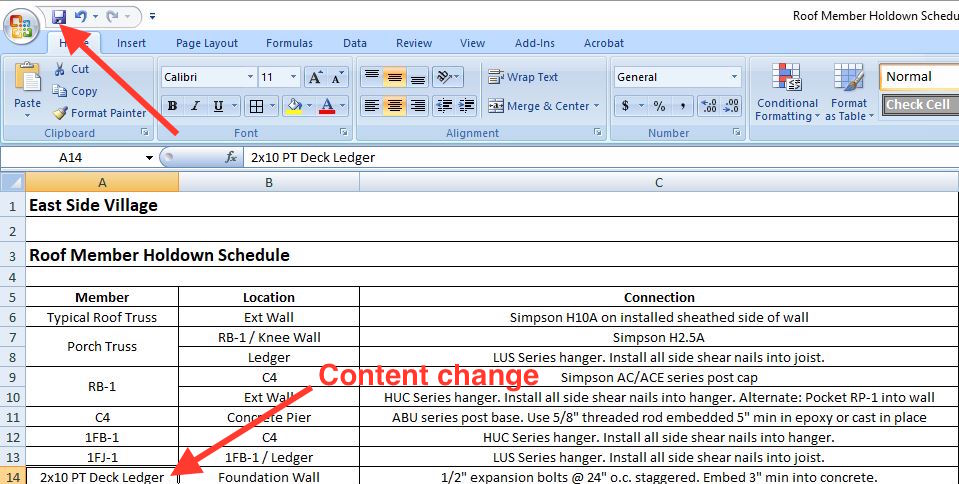Revit Tools for each Job: Your Ultimate Style Friend
Wiki Article
Revit Accelerator: Excel Integration Techniques for Improving Productivity and Cooperation
In this post, we will certainly discover the benefits of incorporating Excel into your Revit workflows. Plus, we will certainly share best methods for seamlessly integrating Excel into your Revit jobs. Get ready to supercharge your Revit experience with our Revit Accelerator: Excel Integration Methods!Advantages of Excel Combination in Revit
The benefits of Excel assimilation in Revit are numerous and can greatly enhance productivity and collaboration. By effortlessly connecting these two powerful devices, you can streamline your operations and conserve beneficial time. With Excel integration, you can easily import and export information between Revit and Excel, allowing you to take advantage of the toughness of both programs.
One more advantage of Excel assimilation is the capacity to produce vibrant timetables and reports. By linking your Revit version to an Excel spreadsheet, any kind of changes made in Revit will automatically upgrade in the equivalent Excel file. This makes it simple to create up-to-date routines, quantity launches, and various other project paperwork.
Excel assimilation in Revit additionally makes it possible for better collaboration among staff member. With the ability to import and export data, you can easily share information with colleagues who may not have access to Revit. This promotes efficient interaction and enables better coordination and decision-making.
Enhancing Operations With Revit and Excel
Enhancing operations with Revit and Excel can significantly boost performance and collaboration. By integrating these 2 effective tools, you can optimize your style process and boost communication within your group. With Revit, you can produce 3D designs and generate detailed architectural and engineering paperwork. When it comes to information monitoring and analysis, Excel is the go-to software application. By integrating the capacities of Revit and Excel, you can seamlessly transfer data between the 2 applications, eliminating the demand for hand-operated information access and minimizing the risk of errors.
Making Use Of Revit and Excel with each other permits you to utilize the toughness of each program - import excel into revit. You can export information from Revit right into Excel, where you can execute complicated computations, produce charts and graphs, and examine the info in a more organized and reliable manner. On the other hand, you can import data from Excel right into Revit, allowing you to rapidly update your models and documentation based upon changes made in Excel
The combination of Revit and Excel also advertises partnership among staff member. By sharing Excel files, you can conveniently team up and communicate on layout and construction-related data. This enhances sychronisation and guarantees that every person is collaborating with the most current info.
Optimizing Collaboration With Excel and Revit
To maximize collaboration with Excel and Revit, you can perfectly share and upgrade style and construction-related information with your team. By incorporating Excel with Revit, you can eliminate the need for manual data access and minimize the risk of mistakes. With simply a few clicks, you can click here to find out more import Excel spread sheets into your Revit design, allowing you to quickly accessibility and control the data. This assimilation enables you to work together extra effectively with your group, as every person can service the very same information in real-time.One of the essential benefits of utilizing Excel in conjunction with Revit is the capability to upgrade information in both programs at the same time. Any kind of changes made in Excel will automatically be shown in Revit, and vice versa. This makes sure that every person is functioning with the most up-to-date information, avoiding confusion and saving important time.
Furthermore, Excel supplies powerful tools for evaluating and arranging information, which can substantially enhance your collaboration efforts. You can create customized reports and charts in Excel, aiding you to visualize and interact essential job info efficiently. When providing data to stakeholders or making informed choices based on task metrics (revit add ins)., this can be particularly valuable.
Advanced Techniques for Increasing Productivity in Revit Making Use Of Excel
By utilizing advanced strategies in Revit, you can considerably increase your productivity by leveraging the power of Excel. With Revit's Excel assimilation function, you can connect Excel spreadsheets straight to your Revit model, enabling you to easily handle and upgrade data.
Additionally, you can utilize Excel macros to automate repeated jobs in Revit (revit plugins). Macros permit you to record a collection of activities and play them back with a single click, saving you effort and time. You can produce a macro visit this page to instantly create room schedules or upgrade criterion values in bulk.
Finest Practices for Excel Assimilation in Revit
Making Use Of Excel as an information administration tool in Revit permits for efficient administration and upgrading of data. One of the ideal methods for Excel integration in Revit is to develop a clear and organized data framework. By following these ideal methods, you can efficiently utilize Excel as an information administration tool in Revit and enhance your efficiency and cooperation.Final Thought
In final thought, integrating Excel with Revit can greatly improve efficiency and partnership in the layout procedure. By leveraging the power of Excel, Revit customers can attain greater levels of productivity and collaboration in their projects.With Excel integration, this post you can easily import and export data between Revit and Excel, allowing you to take advantage of the staminas of both programs.
One of the crucial benefits of Excel combination is the capability to utilize Excel formulas and functions within Revit. By connecting your Revit model to an Excel spreadsheet, any adjustments made in Revit will instantly upgrade in the matching Excel data. On the various other hand, you can import information from Excel right into Revit, allowing you to rapidly update your models and documentation based on adjustments made in Excel.
With Revit's Excel integration feature, you can connect Excel spreadsheets directly to your Revit model, allowing you to easily take care of and update data.
Report this wiki page